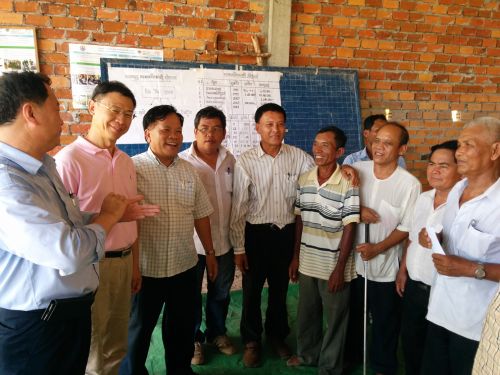Why culture-based fisheries?
10 April 2017 | 2734 views

Food and nutritional security remains problematic in many developing countries. There are many initiatives underway which are designed to increase food supply, employment and income opportunities, most of which require considerable capital inputs (for instance cropping, livestock production and aquaculture). Often overlooked are the opportunities to produce more food from from the natural productive ecology of lakes and forests. Culture-based fisheries are one example of a relatively simple and low cost technology which can deliver nutritional and economic benefits to rural communities that often have few livelihood options.
Culture-based fisheries are based in lakes and reservoirs, where fish populations are supplemented by hatchery-produced fingerlings. The stocked fish may breed naturally or they may be species which are desirable but do not breed in still-water environments. Fish growth is driven by the natural productivity of the water bodies. Generally, local communities have ownership of the fish, with the benefits shared or used for communal purposes. However, there are other options for management and ownership depending on local needs, cultural arrangements and other uses of the water.
Socio-economic aspects of CBF
As CBF is a relatively low cost activity, with the main external input being seed stock, most developing country governments regard CBF to be relevant to and an integrated part of rural development. In general CBF are practised in rural areas, often where water bodies suitable for such activities are located. Hence, the primary beneficiaries of CBF are rural communities, who often tend to be impoverished.
Accordingly, a number of developing country governments in Asia have recognised CBF as a major strategy for improving nutrition and rural household incomes, and have introduced legislation, where relevant, to facilitate such developments.
The nature and the manner of sharing of the socio-economic gains of CBF may differ between the management regimes of water bodies, within a region and country, and could be relatively unique to some regimes. In most regimes there is an emphasis on utilising a proportion of the gains on improving social amenities, a trait that is prevalent among rural communities in developing countries.
Scope of CBF as a strategy for increased food fish production
All evidence indicates that, over the last one and a half decades, CBF practices have become popular in many developing countries in Asia for augmenting food fish production and providing subsidiary income to rural communities.
Consequently, some governments have recognised CBF developments to be a major strategy for food fish production in rural communities, and in certain instances have introduced and or amended existing legislation to facilitate CBF adoption by community groups.
In the early phases of CBF developments it was considered that small water bodies (cf < 40 ha) that retained water for a minimum period of 8-10 months of the year were the most suited.
- Based on the above notion, it was reported that there are 66,710,052 ha (FAO) in Asia with the potential for developing CBF.
- Assuming a production of 700 kg/ha/yr, based on Chinese practices and if only 5 % of the water bodies were used, it was estimated that fish production would be increased by 2.5 million t/yr; a substantial increase at that.
Much water has flown under the bridge since the above prediction was made; notably:
- Many other countries have embarked on CBF.
- As a result of R&D the overall return from CBF has increased substantially. For example, in China it is reported to be 1,746 kg/ha/yr.
- Similarly, larger perennial water bodies are being used for CBF (e.g. Sri Lanka and Thailand), which has boosted fish production further.
- As such, if only the small water bodies are taken into consideration and in view of the fact many governments have embraced CBF as a strategy for increasing food fish production in rural areas, one could assume that by the end of the present decade at least 10 % of some 66.7 million ha could be utilised for CBF. Assuming a production level of 1,000 kg/ha, this will result in a yield of nearly 6.7 million t/yr, a very significant addition to the global food fish needs.
Returns from CBF are very country and area specific. In order to optimise the returns the practices also require a very well organised and a cooperative community. Often these communities have had little previous experiences in fishery related activities. Hence, adequate planning, training and other relevant research needs must be fulfilled to optimise yields from CBF - perhaps the most environmental friendly and sustainable form of aquaculture.
The notion that CBF will revolve around producing relatively low-valued fish, feeding low in the trophic chain, will change in some countries where high-valued species will be cultured to meet market demands, as is happening in China , and increasing use of species such as the giant freshwater prawn, Macrobrachium rosenbergii.
Creative Commons Attribution.